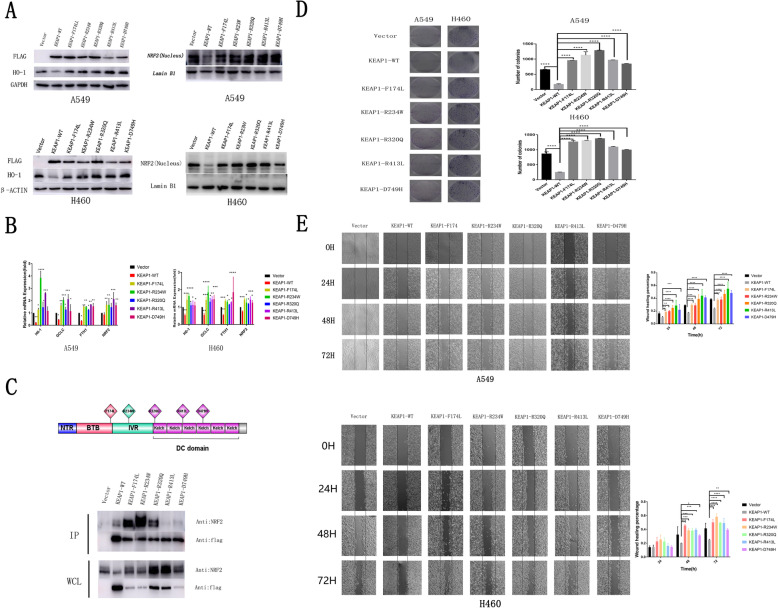Fig. 2.
KEAP1 mutation promoted the activity of lung cancer cell lines in vitro. a Compared with A549 or H460 lung cancer cell lines transfected with empty vector, expression levels of nuclear NRF2 and its target protein HO-1 were significantly decreased in A549 or H460 cells transfected with wild-type (WT) KEAP1 by western blot analysis. The levels of nuclear NRF2 and its target gene HO-1 showed no significant difference after A549 or H460 cells were transfected with the five KEAP1 mutants. b The mRNA expression levels of NRF2 and its target genes were significantly decreased after the cell lines were stably transfected with WT KEAP1. However, the mRNA levels of NRF2 and its target genes HO-1, GCLC, and FTH1 were significantly increased in A549 or H460 lung cancer cell lines stably transfected with the five KEAP1 mutants. c Position of the mutation in the KEAP1 protein. Some mutants (R174L, R234W, and R320Q) enhanced NRF2 binding, while others (R413L and D749H) weakened NRF2 binding. Flag-tagged KEAP1 was co-expressed in A549 cells. Whole cell lysate (WCL) was used respectively as the negative control. Immunoprecipitation experiments were performedusing anti-flag M2 beads, and immunoblot analysis was performed using anti-flag and anti-NRF2 antibodies. d Colony-formation assay showed that the proliferation of A549/H460 lung cancer cell lines stably transfected with WT KEAP1 was significantly decreased, while that of cells transfected with mutant KEAP1 was significant increased. e The scratch wound-healing assay showed that the migration of A549/H460 cells stably transfected with mutant KEAP1 was faster at 0 h, 24 h, 48 h, and 72 h than that of A549/H460 cells transfected with WT KEAP1. Scratch area quantitative analysis by Image J software. Each assay was repeated at least three times. Mean ± standard error of the mean (SEM) are reported (* P < 0.05; **, P < 0.01; ***, P < 0.001)

